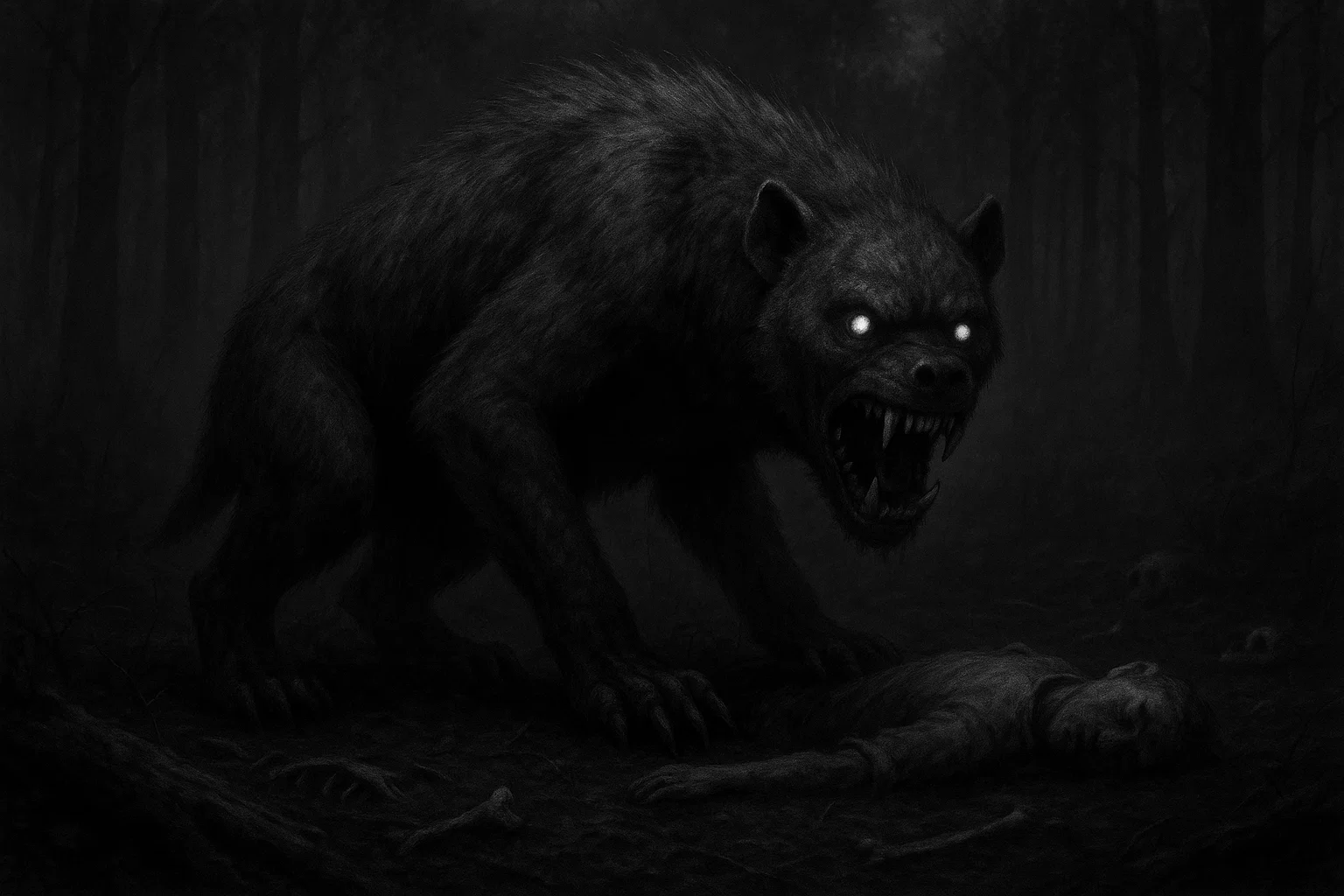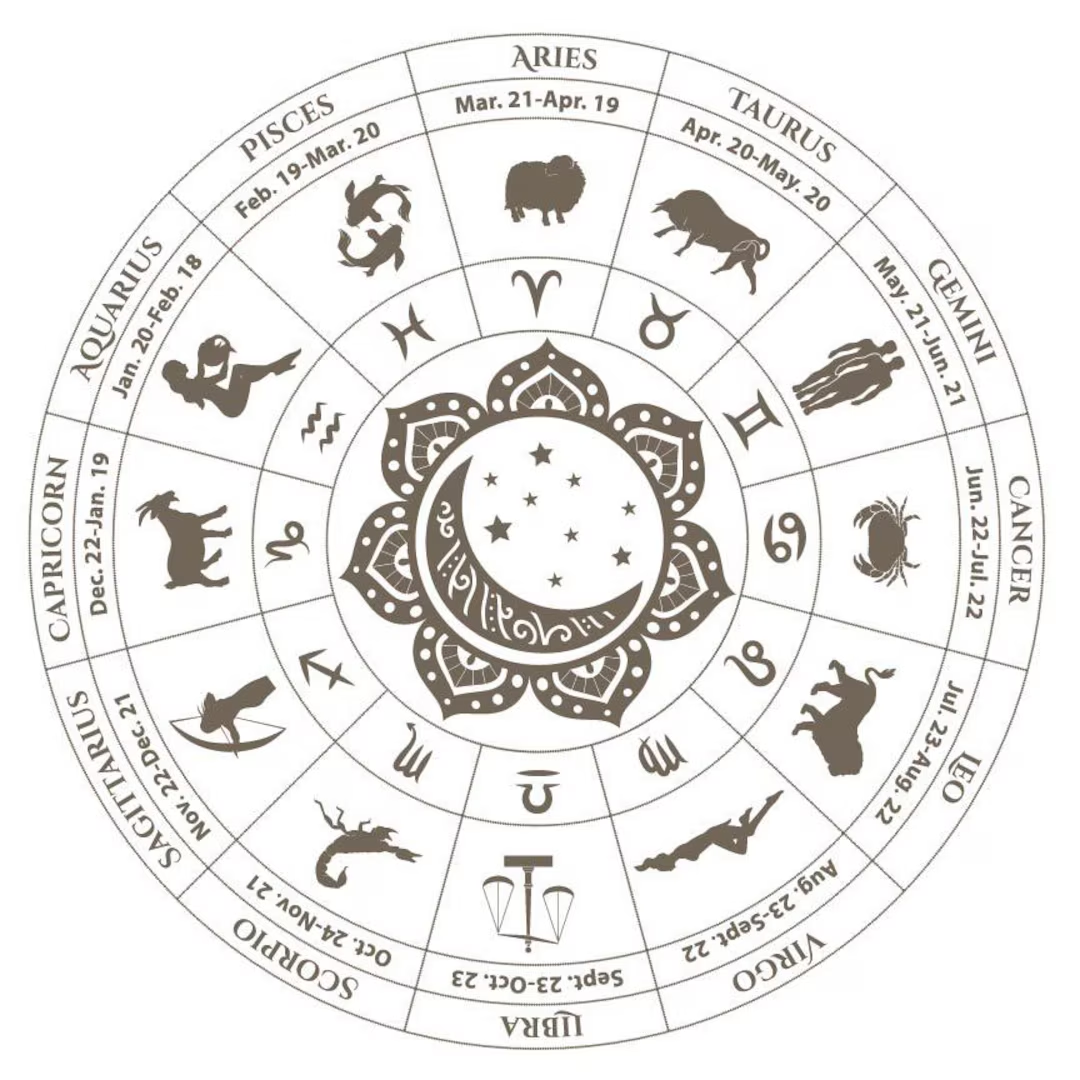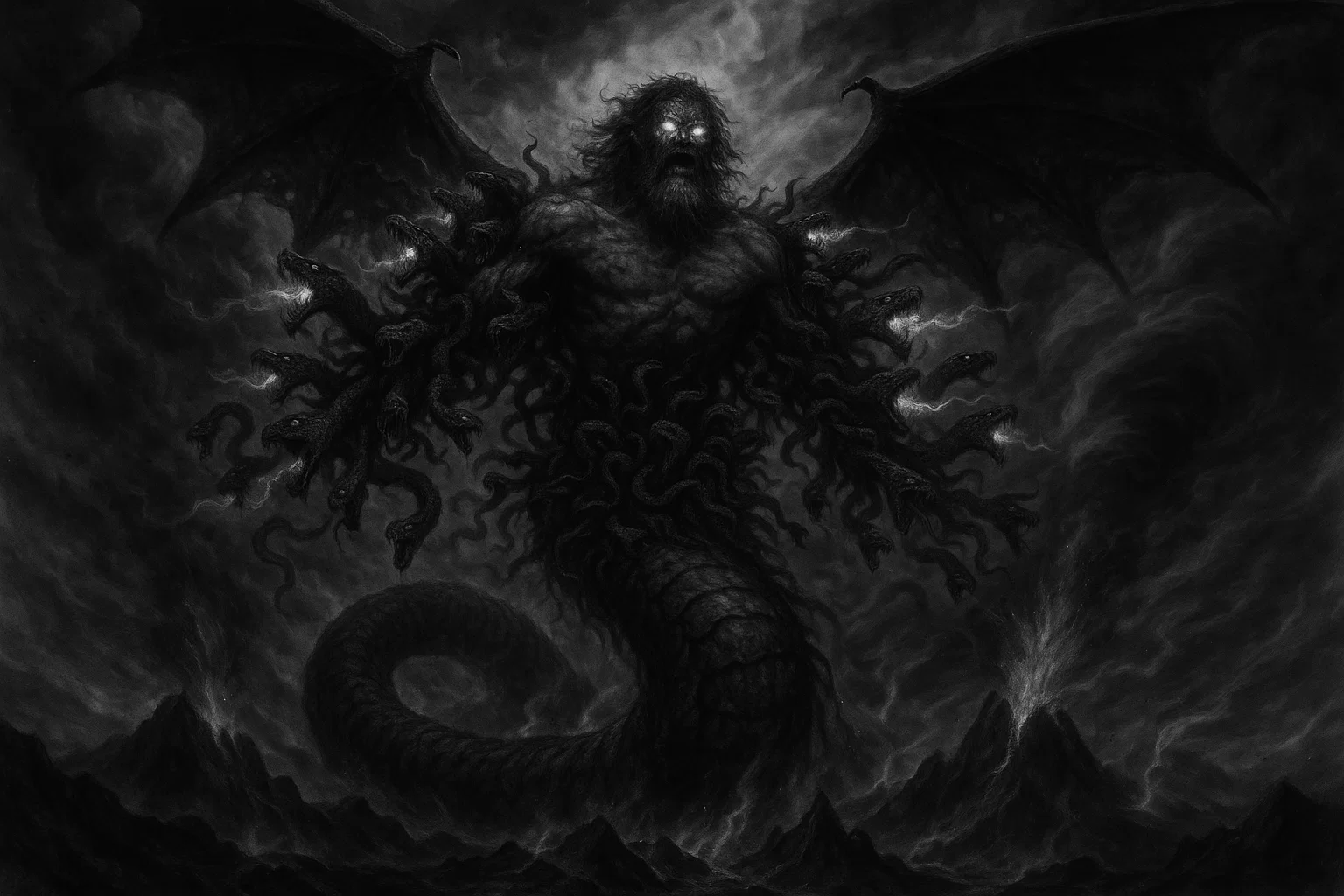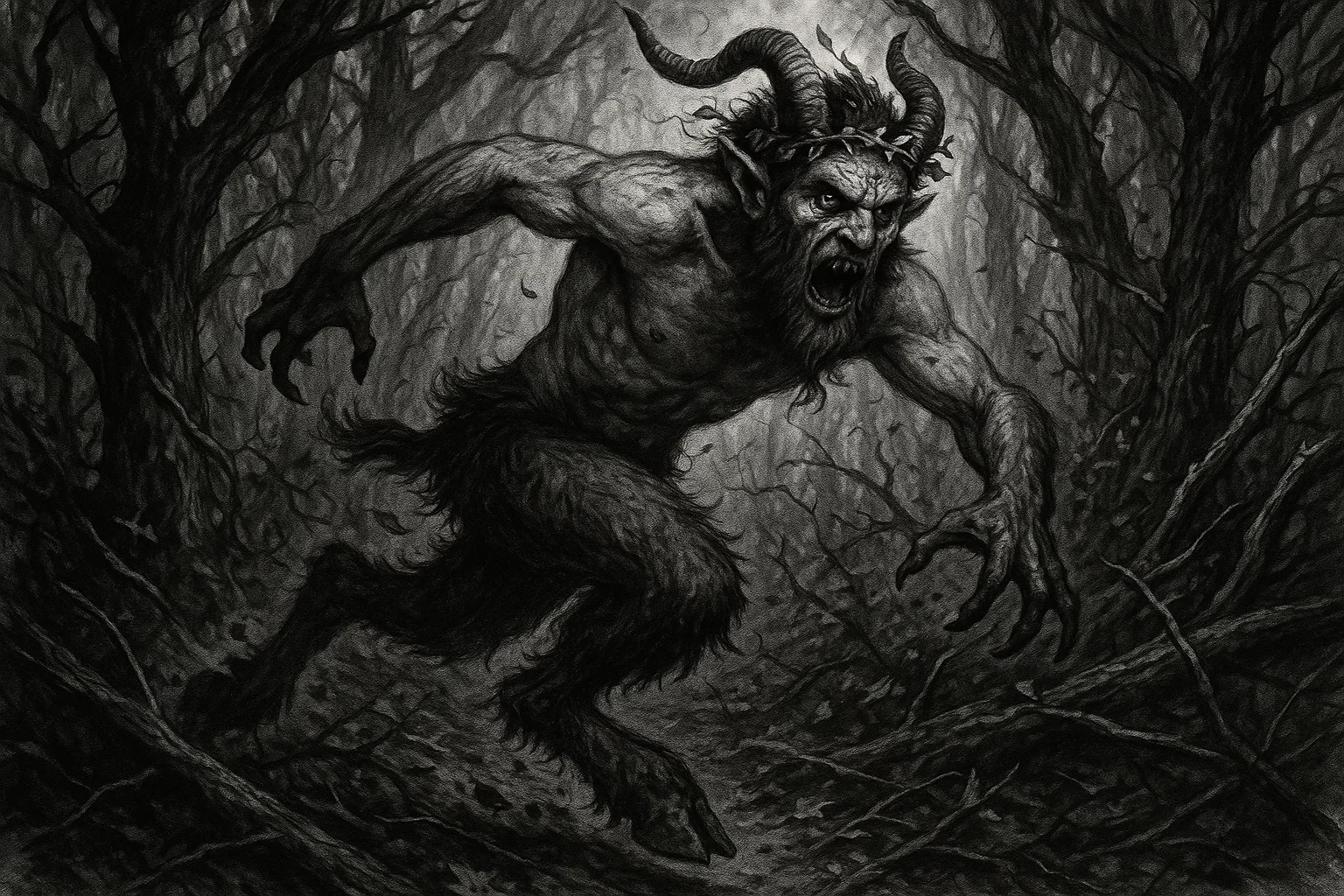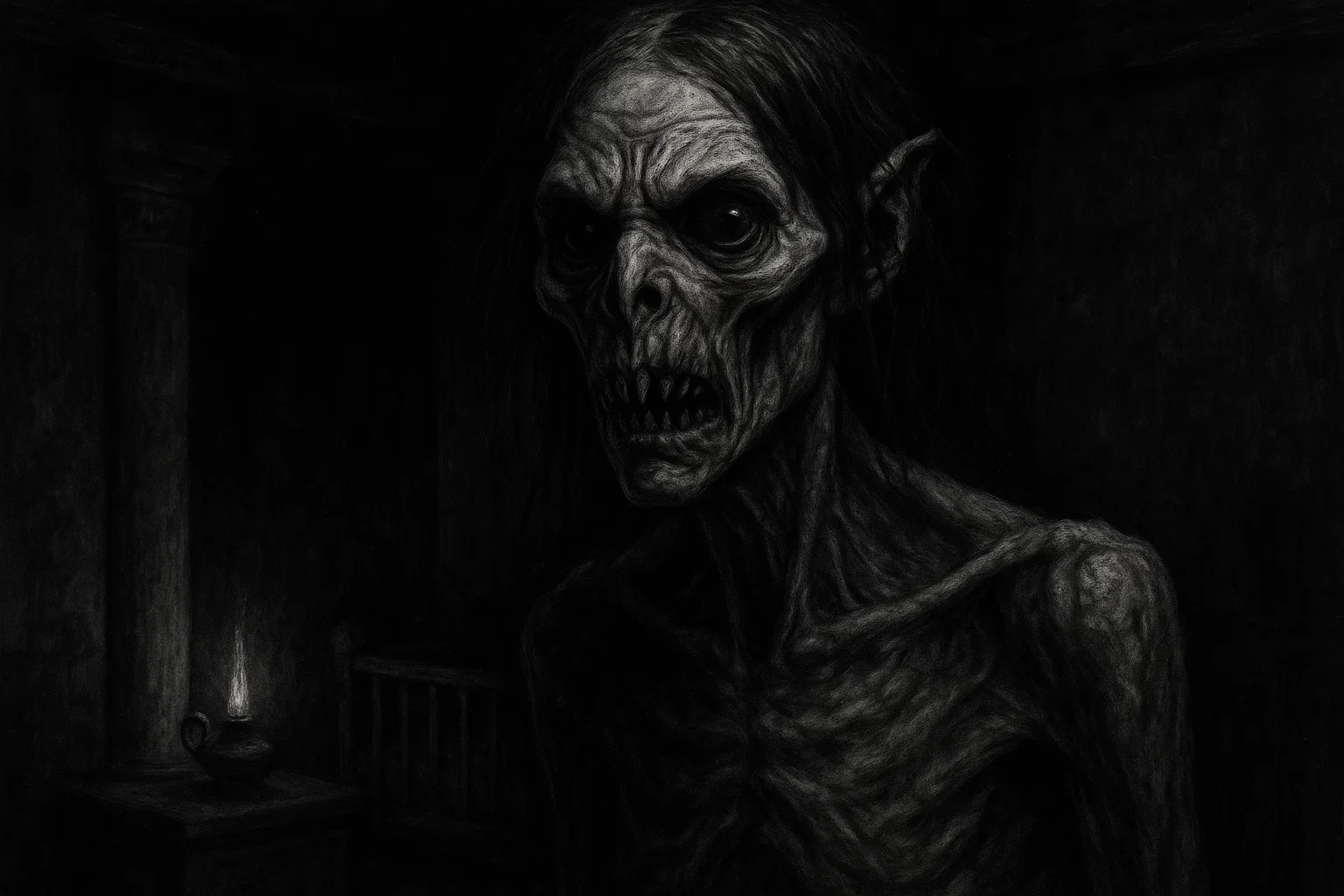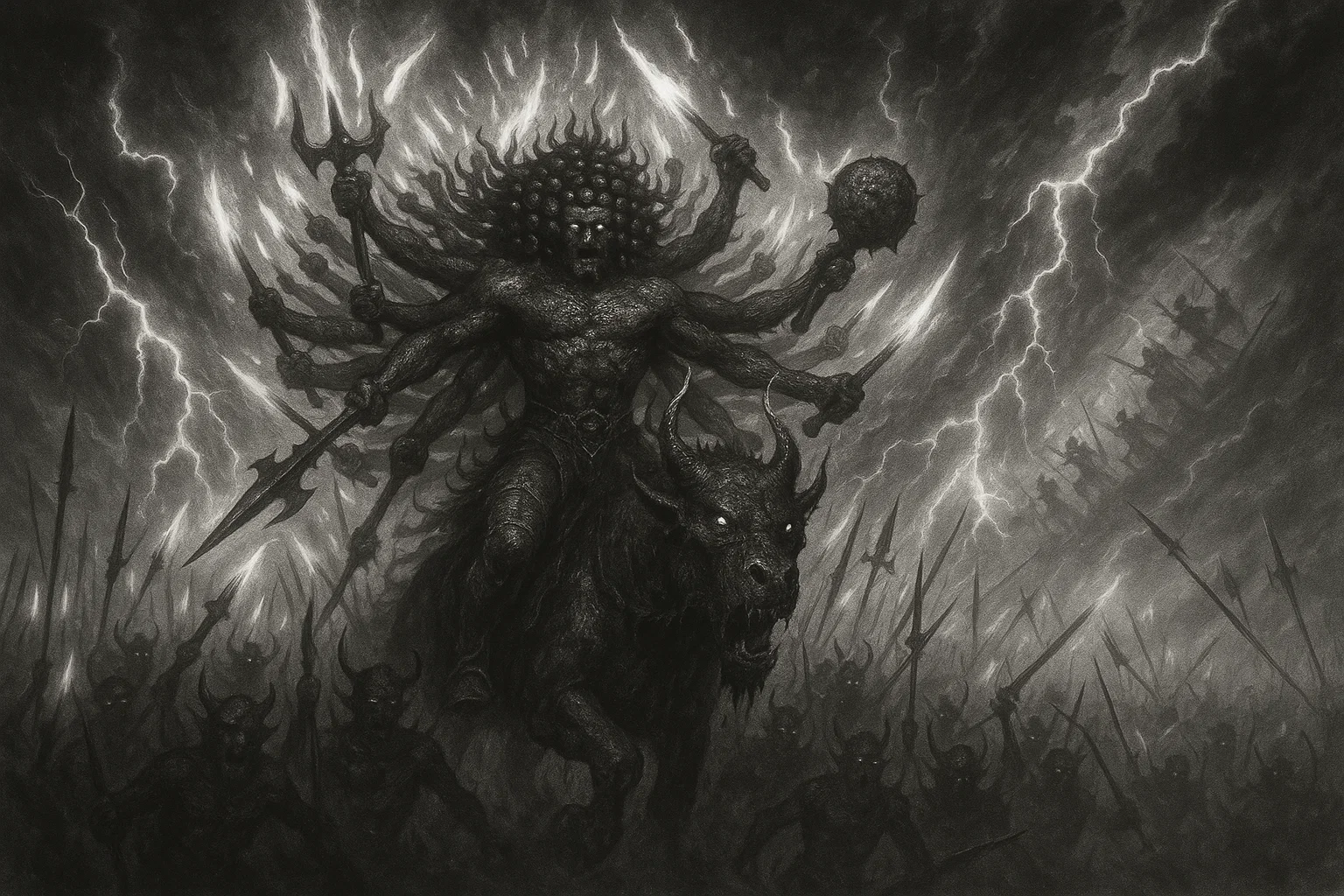The Nandi bear is one of East Africa’s most persistent and terrifying cryptids—an animal whose existence is suggested but not scientifically confirmed.
Reports of this creature, primarily from Western Kenya, describe a ferocious, nocturnal carnivore with a large, bear-like or hyena-like body. Known to the local Nandi people and other tribes as Chemosit, the animal gained widespread notoriety among European colonists, hunters, and naturalists during the late 19th and early 20th centuries.
Despite numerous alleged sightings and terrifying attacks, definitive proof of the Nandi bear has remained mysterious, solidifying its place as an enduring mystery of the African wilderness.
Summary
Overview
| Attribute | Details |
| Name | Nandi bear |
| Aliases | Chemosit, Kerit, Koddoelo, Ngoloko, Duba, Shivuverre |
| Threat Level | Predatory, aggressive, ferocious; rumored to be a man-eater |
| Habitat | Highlands and forested hills of East Africa, primarily Western Kenya (Nandi Hills, Uasin Gishu); also reported in Uganda and Tanzania. |
| Physical Traits | Large, powerfully built body; high front shoulders (over four feet tall); sloping back; thick, reddish or dark brown shaggy hair; short neck and stumpy nose; small or no visible tail; reported to have razor-sharp claws. |
| Reported Sightings | Nandi Hills, Uasin Gishu, Sirgoit Rock, Mataye River, Koora Plains, Cherangani Hills, Koro-Kisumu road (all in Kenya). |
| First Documented Sighting | Late 19th century; first published European settler report often attributed to Geoffrey Williams in 1905. |
| Species Classification | Unknown; speculative classification includes surviving prehistoric mammal (e.g., giant hyena or chalicothere), or an undescribed species of hyena or primate. |
| Type | Terrestrial |
| Behavior & Traits | Nocturnal; exhibits a bear-like shuffling gait or loping run; reportedly stands on its hind legs; its most infamous trait is a supposed preference for consuming the brains of its victims. |
| Evidence | Eyewitness accounts (numerous); local folklore; alleged tracks; claimed carcasses that were either lost or unverified. |
| Possible Explanations | Misidentification of a large spotted hyena or honey badger; an extinct species of giant hyena (Pachycrocuta); a large, unclassified baboon (Dinopithecus); or a type of extinct bear. |
| Status | Ongoing mystery; actively reported throughout the 19th and early 20th centuries, with sightings becoming rare after the 1960s. |
Who or What Is Nandi Bear?
The Nandi bear is a legendary cryptid of East African folklore, mainly known from the oral traditions of the Nandi people of Kenya, who call it the Chemosit or Kerit. Europeans applied the name “bear” to the creature due to its shaggy appearance and its habit of occasionally standing on its hind legs.
However, Africa has not hosted an indigenous bear species since the extinction of the Atlas bear in North Africa. The creature’s notoriety surged during the era of British colonization, when colonial settlers, engineers, and big-game hunters began reporting encounters that mirrored the local legends!
Descriptions of the Nandi bear are notoriously inconsistent, which has fueled the creature’s mystery. Some accounts depict a beast resembling a colossal hyena. Others suggest a prehistoric ape or an animal with a thick-set bear-like body. It is almost universally described as a highly dangerous and powerful predator.
The stories of its ferocity are compounded by its most terrifying alleged habit: a predilection for eating the brains of its human and animal victims. This characteristic has earned it the nickname of “the brain-eater.”
Your Personalized, Hyper Accurate Moon & Astrology Reading
Limited time offer: Get your FREE, fully personalized Moon & Astrology Reading that takes astrology to a whole new level. Discover the secret depths of your personality, relationships, and true purpose in life.
What Does Nandi Bear Look Like?
The physical description of the Nandi bear is a composite of highly varied eyewitness testimonies, yet certain traits appear consistently. Most accounts portray a powerfully built carnivore with a distinctly disproportionate body shape.
It is generally reported to be the size of a large calf or a lion; some settlers estimated its shoulder height at 18-48 inches (0.45–1.2 meters), with a powerful stance suggesting great strength. When it stands on its hind legs, it can appear nearly five feet tall.
A key feature is its silhouette: it possesses high front shoulders and a noticeably sloping back, giving it an appearance similar to a spotted hyena, but far larger and more robust.
Its coat is often described as thick and shaggy, ranging in color from dark brown or black to tawny or reddish. The creature’s head is generally defined as short and broad, with a stumpy nose and small, almost unnoticeable ears.
Unlike a known bear, it often has long forelimbs and shorter hind limbs. The tail is consistently described as very short, stumpy, or even absent. Perhaps the most dramatic (and least consistent) physical trait is the color of its eyes, which are sometimes said to “glow” yellow or red in the darkness of the African night.
You May Also Like: 10 Scary Campfire Stories That’ll Keep Everyone Awake All Night
Habitat
The traditional habitat of the Nandi bear is centered in the elevated, often densely forested, regions of Western Kenya.
The creature takes its name from the Nandi Hills, a crucial area in the former British East Africa Protectorate, where the Nandi people’s folklore concerning the Chemosit is most prevalent. This area encompasses rolling hills, plateaus, and patches of dense woodland, including the Uasin Gishu Plateau and the Cherangani Hills, with altitudes reaching up to 9,000 feet (2,700 meters).
The reported sightings often occur near rivers (such as the Mataye River) and in areas where human settlements meet the wild, such as isolated farms or along the path of the Magadi Railway construction in the early 20th century.
The environmental features of this region—steep terrain, cool temperatures at high elevations, and dense vegetation—provide the perfect cover for a large, secretive predator. Livestock and local wildlife (such as antelopes, warthogs, and various baboon species) would have provided a natural prey base, further supporting the idea of a large, territorial carnivore living in relative isolation.
The Nandi bear’s perceived elusiveness is likely tied to its alleged nocturnal behavior and the rugged, remote nature of its alleged haunts, allowing it to avoid detection even in a region that saw increasing human activity during the colonial era.
Nandi Bear Sightings
Reports of the Nandi bear surged between 1900 and 1960, driven by the accounts of European settlers, railway engineers, and military personnel who were often operating deep in the interior of the East African Protectorate.
These sightings—when viewed alongside local folklore—paint a picture of an animal that, while rare, was certainly feared. The most recent documented sighting was in 1998, although reports have declined significantly since the mid-20th century.
| Date | Place | Witness Details | Description | Reliability |
| c. 1900–1905 | Nandi region, Kenya | Local Nandi people and early European prospectors | Folk tales of the Chemosit, a ferocious, nocturnal animal that targets humans; descriptions are often general, focusing on the beast’s immense power and aggressive nature. | Medium: Consistent folklore precedes European reports. |
| 1905 | Near Sirgoit Rock, Uasin Gishu, Kenya | Geoffrey Williams and a cousin (settlers) | Saw a large animal sitting up on its haunches, estimated to be nearly 5 feet high; it had a bear-like demeanor and a dark color. The creature quickly shambled away towards the rocks. | Medium-High: Published eyewitness account by a known settler. |
| 1912 | Uasin Gishu, Kenya | Major Toulson (military settler) | Described a strange, black beast, about 18-20 inches at the shoulder, with a distinct, bear-like shuffling walk; the sighting occurred at dusk. | Medium: Eyewitness by a military figure. |
| March 1913 | Koora Plains, Magadi Railway, Kenya | Edward Hickes (railway engineer) | A tawny, short-necked, stumpy-nosed animal with very shaggy hair and high withers. He stated it looked as high as a lion, had very short ears and no discernible tail. It loped off quickly. | High: Detailed observation by a professional, technical witness who was close to the animal. |
| 1914 | Kapsowa, Kenya | Local villagers | Creature reported to have killed several people; subsequently lured out with a dummy and killed by villagers using arrows. | Low: Report of a killing exists, but no body or scientific verification. |
| 1923 | Kenya | J. Herman Burge (American hunter) | Claimed to have shot and killed the animal, describing it as a “giant man-eating hyena” with equal fore and hind-quarters—a body shape unlike a normal hyena. | Low: Description is highly interpretive; no body was verified by scientific authorities. |
| 1957 | Chemomi Tea Estate, Nandi Hills, Kenya | Douglas Hutton (Tea Estate Manager) | Shot and killed two animals near his property; they had a sloping back, a heavy mane, and stood about 3 feet at the shoulders. The bodies were reportedly left to be stripped by ants, thus preventing examination. | Medium: Claimed killing of two specimens, but the remains were lost, preventing analysis. |
| 1998 | Koro-Kisumu road, Kenya | Dennis and Marlene Burlett (engineer and wife) | Saw an “enormous, shaggy hyena” crossing the road; the sighting lasted about fifteen seconds. This is the latest widely reported encounter. | Medium-High: Recent, detailed sighting by two witnesses. |
Awaken XT is unlike anything you’ve ever tried before…
…it’s based off a closely guarded formula that’s said to be able to supercharge your pineal gland and help you access your untapped inner power. With it’s unique blend of extremely hard to source ingredients, Awaken XT helps support the healthy functioning of your pineal gland, as well as your other organs in your body.
Geoffrey Williams (Sirgoit Rock, 1905)
One of the earliest and most detailed European accounts that brought the Nandi bear to the attention of the wider world was reported by settler Geoffrey Williams in 1905.
While camping with a cousin near the Sirgoit Rock on the Uasin Gishu plateau, Williams encountered a strange animal at close range. He described it as a large creature that was “sitting up on its haunches,” an attitude highly reminiscent of a bear begging for food at a zoo.
Williams estimated the creature’s height at nearly 5 feet in this position. The animal was dark in color and had a peculiar, bear-like shuffling gait when it dropped forward and shambled away, a movement his cousin described as a “sideways canter.”
This observation was instrumental in associating the local Chemosit legend with a physical, bear-like animal.
You May Also Like: Agares: The Duke of Hell Who Commands Earthquakes
Edward Hickes (Magadi Railway, 1913)
During the construction of the Magadi Railway in the East African Protectorate, several strange creatures were reported, the most famous being the sighting by railway engineer Edward Hickes in March 1913.
Hickes observed the creature near the railway line at Koora Plains. He immediately noted that it was not a hyena, though it was roughly the height of a lion. He described a tawny-colored animal with very shaggy, long hair, a thick-set body, and high withers (shoulders).
Most distinctively, he noticed its short neck, stumpy nose, and lack of a visible tail. He was close enough to see it lope away, running with its forelegs. At the same time, both hind legs seemed to rise simultaneously, providing a complex and memorable description of its locomotion.
Douglas Hutton (Chemomi Tea Estate, 1957)
A later, more dramatic encounter was reported in 1957 by Douglas Hutton, who managed a tea estate in the Nandi Hills.
Hutton claims to have shot and killed two specimens of the unknown creature. He described the animals as having sloping backs, heavy manes, and standing approximately 3 feet tall at the shoulders.
After successfully killing the two beasts, he placed the carcasses at a nearby factory for observation. Unfortunately, before any scientific examination could take place, the bodies were reportedly stripped to the bone by insects and scavengers, leaving no remains for formal identification.
This incident, while unverified by a proper zoological study, remains one of the few reports that claims to have physically captured—and lost—evidence of the Nandi bear.
You May Also Like: What Is the Holawaka? The Ethiopian Spirit Bird That Doomed Humanity
Evidence & Investigations
The evidence for the existence of the Nandi bear is almost entirely reliant on eyewitness accounts and folklore; unfortunately, physical evidence is scarce, contradictory, or has been lost.
The earliest investigation into the creature was conducted by anthropologist Charles William Hobley, who collected local testimony and published a diagram of a supposed Nandi bear foot in 1913. These tracks, though, were often inconsistent with known bear tracks, sometimes showing five toes and claws, which led to confusion.
A major challenge for cryptozoological investigations is the lack of a confirmed carcass. Several individuals have claimed to have killed the creature (such as J. Herman Burge in 1923 and Douglas Hutton in 1957). Still, the remains were either lost, destroyed, or quickly decomposed, preventing formal analysis by zoologists.
The famous Kenyan paleontologist Louis Leakey, an avid student of African natural history, reportedly examined the remains of a creature alleged to be a Nandi bear, which he referred to as a “giant forest hyena.” However, this specimen, too, was eventually lost, a frustrating pattern that haunts the Nandi bear mystery.
Scientific opinion, largely based on analysis of the eyewitness descriptions, has generally dismissed the cryptid as a misidentification of known animals.
Zoologists like Reginald Innes Pocock, for example, argued that the Nandi bear was simply a misidentified spotted hyena (Crocuta crocuta). Despite this, the creature remains a subject of cryptozoological study, primarily focused on the possibility of a surviving prehistoric mammal.
The absence of a large, bear-like carnivore in modern African fauna makes the Nandi bear one of the continent’s most compelling—if undocumented—biological puzzles.
Theories
Given the wide variation in eyewitness descriptions—from a small, black, bear-like animal to a massive, shaggy hyena—it is highly likely that the term Nandi bear (or Chemosit) is a collective name for several different, rare, or misidentified animals.
You May Also Like: Is the Lukwata Real or Just an African Legend?
The Misidentified Hyena
This is the most common and academically accepted explanation! Several professional zoologists, including R. I. Pocock, have argued that the Nandi bear is nothing more than a misidentified spotted hyena (Crocuta crocuta).
Spotted hyenas are common in Kenya. They are powerfully built, possess high fore-quarters and a sloping back, and can display exceptional ferocity. Furthermore, the British Museum (Natural History) stated as early as 1932 that many Nandi Bear reports were “nothing more than a spotted hyena.”
The variation in size and coat color among individual hyenas, combined with the stress and low-light conditions of an encounter, could easily lead a startled witness to exaggerate its size and mistake its features for a bear or a monster.
Surviving Prehistoric Megafauna
A more dramatic cryptozoological theory suggests the Nandi bear could be a surviving relic of an animal long thought extinct: the Giant Hyena (Pachycrocuta).
This extinct genus included hyenas the size of a modern lion that dominated the Pleistocene epoch. The description of the cryptid as an “enormous, shaggy hyena” with jaws of immense power aligns remarkably well with the theoretical appearance and predatory capacity of Pachycrocuta.
Similarly, paleontologists such as Charles William Andrews and Louis Leakey once suggested that the descriptions matched those of the Chalicothere, an extinct herbivorous mammal. Though chalicotheres were plant-eaters, they had a peculiar, robust, bear-like gait, leading some to consider a distant, smaller, or predatory relative as a possibility.
An Undocumented Primate
Another popular theory suggests the Chemosit reports could be attributed to an unclassified primate, possibly a giant baboon species or a relic hominid.
This theory finds support in the fact that local names for the creature, such as Koddoelo, have been associated with reports of a “giant baboon”. Extinct species like the massive Dinopithecus (giant baboon) once lived in the region, and its powerful, large body and occasional bipedal stance could potentially fit some of the more ape-like or shaggy descriptions.
The brain-eating behavior—while sensationalized—has also been noted as compatible with the hunting patterns of certain large primates, which target the head of their prey.
You May Also Like: What Is the Mazomba—Africa’s Lost Dinosaur or an Unknown Rhino?
Comparison with Other Similar Cryptids
The Nandi bear shares behavioral and physical traits with many other large, terrestrial, and typically hairy cryptids worldwide, especially those that defy easy classification as either bears, apes, or dogs.
| Cryptid | Location | Primary Description | Distinguishing Features |
| Bigfoot | North America (Pacific Northwest, etc.) | A large, bipedal, ape-like hominid covered in dark brown or black hair. | Exclusively bipedal; known for massive footprints and a foul, skunk-like odor. |
| Yeti | Himalayas (Nepal, Tibet) | A tall, white or grayish-haired hominid adapted to cold, alpine environments. | Lives at extremely high altitudes; often associated with ice and snow; more ethereal and elusive than Bigfoot. |
| Yowie | Australia | A bipedal, ape-like creature, typically shorter and stockier than North American Bigfoot. | Focus of Aboriginal Australian folklore; reported in forests, deserts, and the outback. |
| Skunk Ape | Southeastern US (Florida, Louisiana) | A large, reddish-brown, ape-like hominid known for an overwhelmingly putrid smell. | The smell is its primary feature, which witnesses often liken to rotting meat or swamp gas. |
| Agogwe | East Africa (Tanzania, Mozambique) | A small, bipedal, human-like creature standing only 3–5 feet tall with reddish hair. | Significantly smaller than the Nandi bear; often considered a relic hominin or small primate. |
| Thylacine (Tasmanian Tiger) | Tasmania/Australia (considered extinct) | A dog-like marsupial with a stiff tail and dark stripes across its back; a predator. | Known animal, but sightings persist; the striped back is its most unique physical feature. |
| Beast of Gévaudan | France | A massive, wolf-like or mastiff-like predator that carried out a series of attacks in the 1760s. | Associated with documented mass human casualties; often thought to be a large wolf or wolf-dog hybrid. |
| Mapinguari | Amazon Rainforest (Brazil, Bolivia) | A large, sloth-like creature with long red hair, often described with a single eye or a second mouth on its belly. | Associated with the giant ground sloth (Megatherium); possesses a powerful, unique roar. |
Is Nandi Bear Real?
The question of whether the Nandi bear is real remains one of cryptozoology’s most intriguing debates.
The creature is almost certainly rooted in a combination of authentic local folklore—where the Chemosit represents the ultimate danger of the wilderness—and the misinterpretation of known animals by both native tribes and European colonists.
Zoologically, the probability of an entirely new species of large, bear-like carnivore surviving into the late 20th century in an area as relatively well-explored as Kenya is extremely low.
The most rational explanation posits that the creature is a collection of misidentified animals: the bear-like shuffles and sloping back point strongly to the spotted hyena or possibly a massive honey badger (ratel).
However, the numerous and detailed accounts from credible witnesses (engineers, military officers, and settlers), many of whom were familiar with African fauna, suggest a phenomenon beyond simple mistake.

